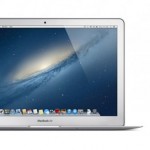
 Apple’s 2013 MacBook Air and new Airport Extreme Base Station are the company’s first 802.11ac products, and there are some bugs that need to be worked out. Apple Apple’s 2013 MacBook Air doesn’t look like much of an upgrade from the outside, but the story is different on the inside. We’ve spent the better part of a week using the new Air and measuring just how Intel’s new Haswell processors , the PCI Express-based SSD , and the 802.11ac Wi-Fi adapter change the laptop compared to last year’s model. The new Wi-Fi chip was the change that I was the most eager to get my hands on. I’m always looking to boost my network speeds, but I’ve been waiting for hardware based on the new 802.11ac standard to become more widely available before upgrading everything on my network. Reviewing both the new Air and Apple’s new 802.11ac-capable Airport Express Base Station simultaneously would give me a chance to see just how close the lauded “Gigabit Wi-Fi” would come to fulfilling its promises. I was unpleasantly surprised by the results. Both the 2012 and 2013 MacBook Airs use four antennas to transmit data—two to send data and two to receive it. Each set of antennas can theoretically send and receive 150Mbps (or 18.75MBps) using 5GHz 802.11n for a total of 300Mbps (37.5MBps). Under 802.11ac, the size of each stream is increased to 433Mbps, making for a maximum theoretical link speed of 866Mbps (108.25MBps) in the 2013 MacBook Air. Actual network transfer speeds rarely (if ever) come within spitting distance of these theoretical maximums, but we would at least expect the actual 802.11ac transfer speeds to increase by a similar percentage compared to 802.11n. Read 8 remaining paragraphs | Comments
Apple’s 2013 MacBook Air and new Airport Extreme Base Station are the company’s first 802.11ac products, and there are some bugs that need to be worked out. Apple Apple’s 2013 MacBook Air doesn’t look like much of an upgrade from the outside, but the story is different on the inside. We’ve spent the better part of a week using the new Air and measuring just how Intel’s new Haswell processors , the PCI Express-based SSD , and the 802.11ac Wi-Fi adapter change the laptop compared to last year’s model. The new Wi-Fi chip was the change that I was the most eager to get my hands on. I’m always looking to boost my network speeds, but I’ve been waiting for hardware based on the new 802.11ac standard to become more widely available before upgrading everything on my network. Reviewing both the new Air and Apple’s new 802.11ac-capable Airport Express Base Station simultaneously would give me a chance to see just how close the lauded “Gigabit Wi-Fi” would come to fulfilling its promises. I was unpleasantly surprised by the results. Both the 2012 and 2013 MacBook Airs use four antennas to transmit data—two to send data and two to receive it. Each set of antennas can theoretically send and receive 150Mbps (or 18.75MBps) using 5GHz 802.11n for a total of 300Mbps (37.5MBps). Under 802.11ac, the size of each stream is increased to 433Mbps, making for a maximum theoretical link speed of 866Mbps (108.25MBps) in the 2013 MacBook Air. Actual network transfer speeds rarely (if ever) come within spitting distance of these theoretical maximums, but we would at least expect the actual 802.11ac transfer speeds to increase by a similar percentage compared to 802.11n. Read 8 remaining paragraphs | Comments
More:
OS X is holding back the 2013 MacBook Air’s 802.11ac Wi-Fi speeds






